365 Urban Species. #189: Moon Jelly
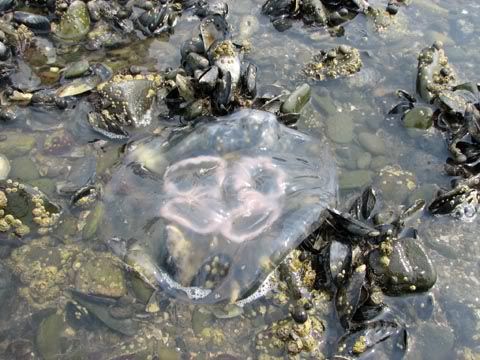
Photo by cottonmanifesto. Location: Castle Island beach.
Urban species #189: Moon jelly Aurelia aurita
Tourists in Boston, visiting the area around the New England Aquarium, look into the harbor and see the local wildlife. "There's another one!" Water filthy with drink bottles and discarded snack wrappers laps against the paved wharves of the city, while round and translucent animals drift to the surface and then back down into the murk. Moon jellies are found worldwide at the coasts. They are predators, catching small animals like larval crustaceans and mollusks in their short stinging tentacles and layer of mucus on their undersides. Certain kinds of pollution--fertilizer, sewage--increase the number of moon jellies in the water, making them generally more numerous around human activity. They also may become seasonally very common, at times some shallow waters may be thick with them. Often they are stranded on beaches, drying to a thin disc of sand stuck together with protein. They are fed upon by sea turtles, who have been known to die eating floating plastic bags mistaken for jellyfish.
Four semicircular markings in the moon jelly show the location of the sex and digestive organs. Color in these markings can indicate what food the jellies are eating (pinks and oranges for shrimp, for example). Accompanied by a local reporter, wandering the city to look at wildlife, we discovered that some of the moon jellies had three markings, and many had six. The significance of this variability remains a mystery to me.
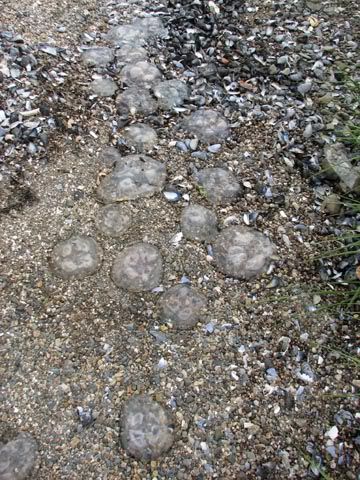
Many moon jellies, stranded on Castle Island beach.
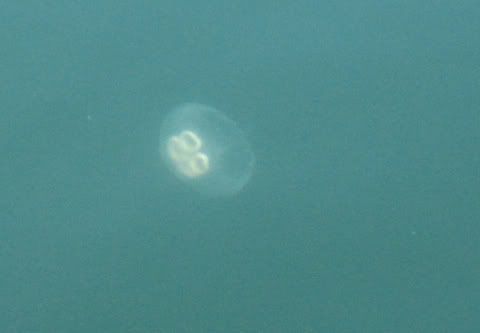
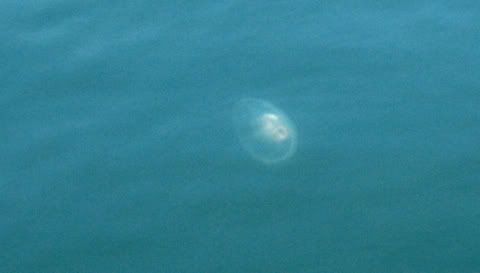
Moon jellies in Boston Harbor, outside the Aquarium. (originally posted last year)
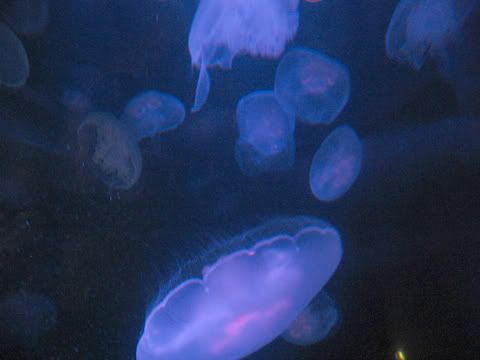
Captive moon jellies on exhibit inside the New England Aquarium.